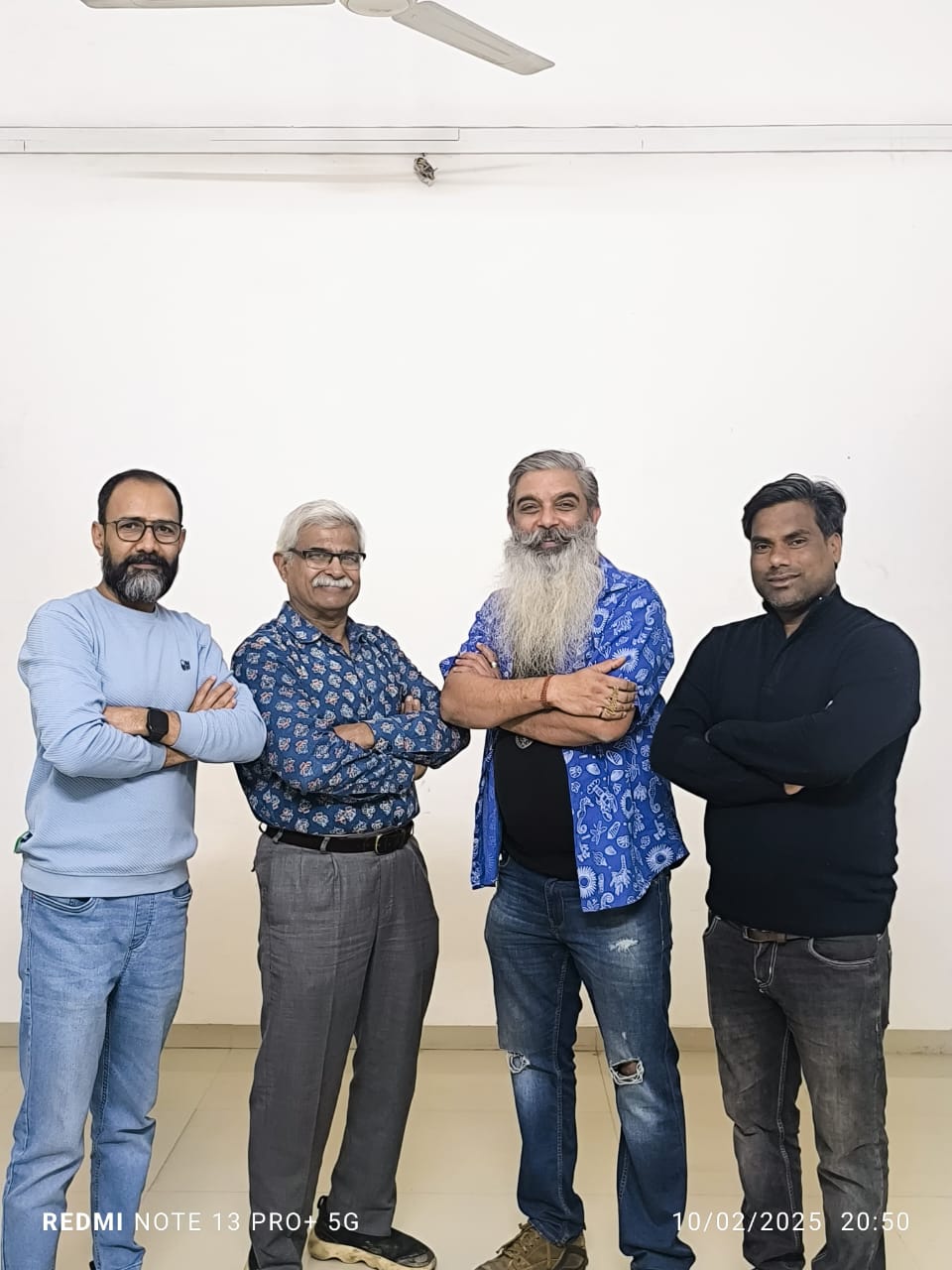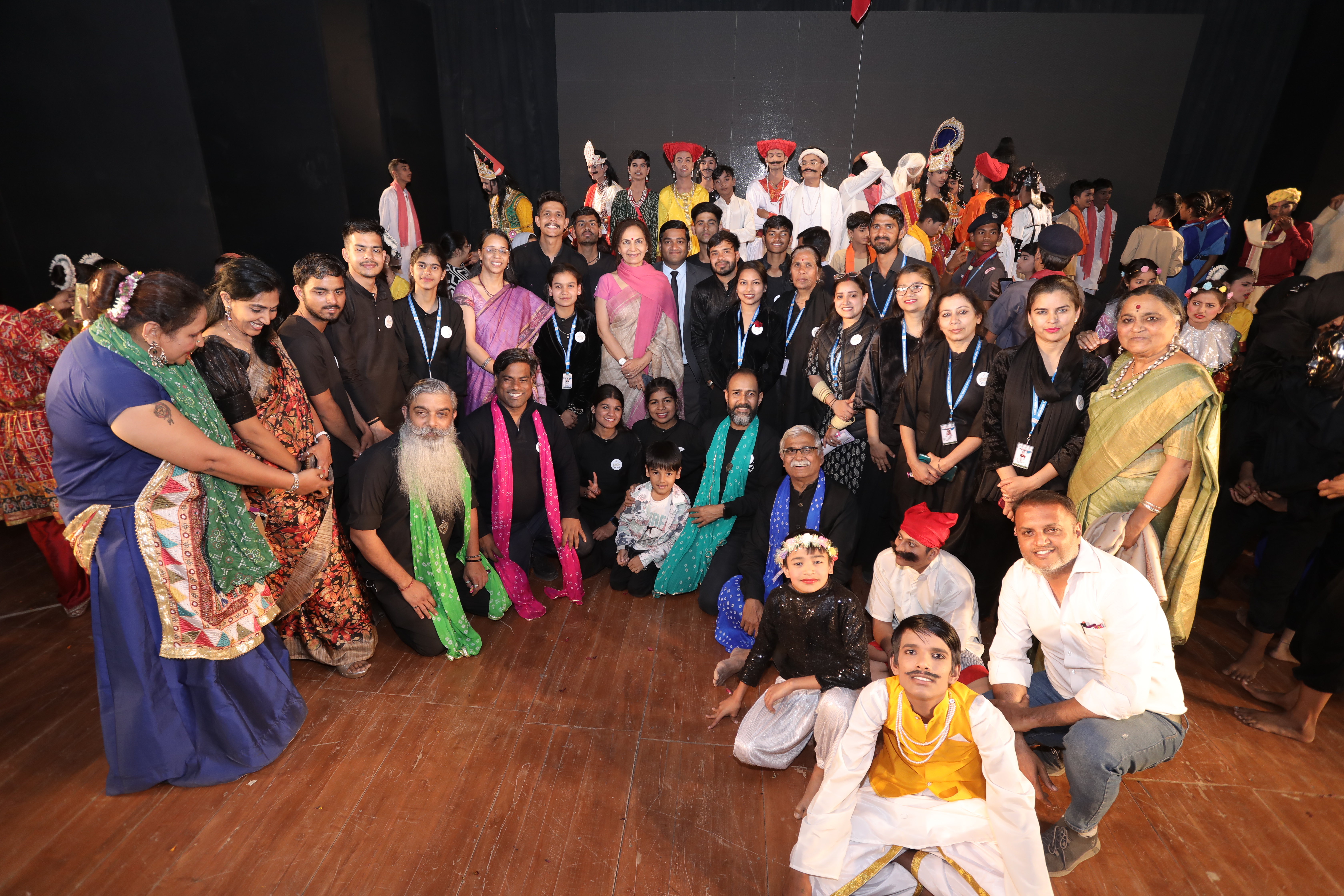
The mere mention of ‘Singhasan Battisi’ evokes the image of Emperor Vikramaditya—a sovereign whose unwavering commitment to justice, unparalleled valor, and relentless devotion to his people made him an eternal icon of righteousness. His legendary tales, interwoven with courage and wisdom, have inspired generations. The chronicles of Vikram and Betal, and the enchanting dialogues between Raja Bhoj and the celestial puppets, continue to resonate in the collective consciousness of India. Such was his greatness that Indra, the king of Gods, gifted him a divine throne adorned with thirty-two celestial figurines, entrusting Agiya and Betal as his divine protectors. The timeless appeal of ‘Singhasan Battisi’ lies in its profound moral and mythological lessons, making it an invaluable treasure of Indian literature.

Imagining ‘Singhasan Battisi’ as a multimedia mime melodrama was extraordinary in itself. What made it even more remarkable was that this play was to be performed by the students of Abhilasha Special School—students with Hearing Impairment (HI) and Intellectual Disabilities(ID) . This vision was conceived by Rainu Singh, the leading force behind the Society for Education of the Differently-Abled (SEDA), who entrusted the esteemed Rainbow Society (Theatre organization )of Jaipur with the responsibility of bringing it to life. This project of “Mime Melodrama” found its guiding lights in the dedicated and innovative theatre artists—Siraj Ahmed Bhati and Vichitra Singh. Both seasoned dramatists and creative visionaries, they believed in breaking conventions. Coincidentally, they were also my fellow disciples under the tutelage of Padma Shri Niranjan Goswami in the art of mime.
The journey of this play began when Siraj and Vichitra reached out to me before Diwali. Together, we engaged in extensive discussions with the teachers and administration of Abhilasha School in Udaipur, meticulously crafting a theatrical adaptation of ‘Singhasan Battisi.’ With each passing day, the vision gained shape—five representative stories were chosen, leading to the script’s development. Hours were devoted to conceptualizing stage design, lighting, props, music, and every intricate aspect of the production. Online meetings, phone calls, video conferences—every scene was dissected and debated to ensure a cohesive and impactful narrative.
The students were fluent in sign language, which enabled swift communication among them but lacked the depth of emotional expressions essential for a theatrical performance. The challenge was to make this production comprehensible to an audience unfamiliar with sign language. To bridge this gap, we worked extensively on refining their expressions, slowing down their gestures while enhancing facial expressions to communicate emotions effectively.
Crafting a flexible script was crucial. Only pivotal moments featured brief narration voiceovers, ensuring an uninterrupted connection with the audience. All the roles including Samrat Vikramaditya , Raja Bhoj were rendered entirely through mime, exhibiting emotions solely through facial expressions—completely eliminating lip synchronization.
The play’s complexity was evident in its layered storytelling, integrating all nine dramatic sentiments (Navarasa), including wonder, compassion, love, humor, valor, rage, disgust, terror, and tranquility. To aid the students, we employed a unique technique—the ‘Degree of Expression.’ Through playful exercises, they learned to depict each emotion at varying intensities, from the subtlest hint to the most profound manifestation. Controlled breathing techniques further helped regulate their expressions, ensuring precision in their performances.
Visual aids such as sketches, photographs, and videos were used to convey the narrative effectively to the students and teachers . Innovation played a crucial role—color therapy, rhythm therapy, and sound therapy were integrated to enhance their comprehension of stagecraft and communication.
The production team meticulously studied the architectural and acoustic limitations of Darpan Auditorium at Shilpgram, ensuring a seamless adaptation. In order to explain Vichitra Singh crafted an elaborate stage design model with sets and properties. All the Singhasans, tree, hillock, masks, tools, and costume was intricately designed to captivate the audience. Krishna Kate, Manila Singh, Monika Ojha, and Pinky Kanwar assisted in material construction. Director of this MimeMeodrama Siraj Bhati skillfully curetted the music and visual elements displayed on LED screens, while Jayesh Sharma and Divyesh Lakshkar adeptly helped him in technical aspects. The script’s auditory components were brought to life through the mesmerizing narration voiceover of Siraj Bhati, Manish Sharma, Rashmi Gupta, Madhuri Guhil, Praisy Vinod, and Vinod Vasave.
The play’s choreography, orchestrated by Ghanshyam Mahawar, was nothing short of magical—from the grandeur of Ganesh Vandana to the elegance of celestial dances in Indralok and the spine-chilling sequences of evil spirits. The deaf students executed every movement with remarkable precision, embodying sheer artistic brilliance. Makeup artists Suryabhan Shilparaha and Om displayed their proficiency in make up.
A dedicated team of 20 backstage crew members worked relentlessly alongside 64 extraordinary performers, displaying the efficiency of a professional theatre troupe. The thunderous applause from the audience testified to the magnificence of their efforts.
Staged at Darpan auditorium of Shilpgram on 14 th February,2025Mime Melodrama ‘Singhasan Battisi’ left the audience spellbound, evoking admiration and deep appreciation for these exceptional children. The overwhelming response was a testament to their hard work, resilience, and the vision of the directors and mentors. Without a doubt, this play has secured its place among the finest productions staged at Shilpgram’s Darpan Auditorium.
The principal of Abhilasha Special School, Pooja Agrawal and her dedicated team deserve immense applause for making this theatrical dream a reality.
— Vilas Janve